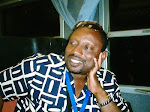French Muslims Find Haven in Catholic Schools

Franco Zecchin for the International Herald Tribune
Nadia Oualane, right, and Amina Zaidi may wear head scarves at St. Mauront, a Roman Catholic school in Marseille. The scarves are forbidden in state schools.
By KATRIN BENNHOLD
Published: September 29, 2008
MARSEILLE,
France — The bright cafeteria of St. Mauront Catholic School is conspicuously quiet: It is
Ramadan, and 80 percent of the students are Muslim. When the lunch bell rings, girls and boys stream out past the crucifixes and the large wooden cross in the corridor, heading for Muslim midday prayer.

Franco Zecchin for The International Herald Tribune
Amina at the blackboard. In a French magazine's recent ranking of high schools, 15 of the top 20 were Catholic schools.
"There is respect for our religion here," said Nadia Oualane, 14, a student of Algerian descent who wears her hair hidden under a black head scarf. "In the public school," she added, gesturing at nearby buildings, "I would not be allowed to wear a veil."
In France, which has only four Muslim schools, some of the country's 8,847 Roman Catholic schools have become refuges for Muslims seeking what an overburdened, secularist public sector often lacks: spirituality, an environment in which good manners count alongside mathematics, and higher academic standards.
No national statistics are kept, but Muslim and Catholic educators estimate that Muslim students now make up more than 10 percent of the two million students in Catholic schools. In ethnically mixed neighborhoods in Marseille and the industrial north, the proportion can be more than half.
The quiet migration of Muslims to private Catholic schools highlights how hard it has become for state schools, long France's tool for integration, to keep their promise of equal opportunity.
Traditionally, the republican school, born of the French Revolution, was the breeding ground for citizens. The shift from these schools is another indication of the challenge facing the strict form of secularism known as "laïcité."
Following centuries of religious wars and a long period of conflict between the nascent Republic and an assertive clergy, a 1905 law granted religious freedom in predominantly Roman Catholic France and withdrew financial support and formal recognition from all faiths. Religious education and symbols were banned from public schools.
France is now home to around five million Muslims, Western Europe's largest such community, and new fault lines have emerged. In 2004, a ban on the head scarf in state schools prompted outcry and debate about loosening the interpretation of the 1905 law.
"Laïcité has become the state's religion, and the republican school is its temple," said Imam Soheib Bencheikh, a former grand mufti in Marseille and founder of its Higher Institute of Islamic Studies. Imam Bencheikh's oldest daughter attends Catholic school.
"It's ironic," he said, "but today the Catholic Church is more tolerant of — and knowledgeable about — Islam than the French state."
For some, economics argue for Catholic schools, which tend to be smaller than public ones and much less expensive than private schools in other countries. In return for the schools' teaching the national curriculum and being open to students of all faiths, the government pays teachers' salaries and a per-student subsidy. Annual costs for parents average 1,400 euros (less than $2,050) for junior high school and 1,800 euros (about $2,630) for high school, according to the Roman Catholic educational authority.
In France's highly centralized education system, the national curriculum proscribes religious instruction beyond general examination of religious tenets and faiths as it occurs in history lessons. Religious instruction, like Catholic catechism, is voluntary.
And Catholic schools take steps to accommodate different faiths. One school in Dijon allows Muslim students to use the chapel for Ramadan prayers.
Catholic schools are also free to allow girls to wear head scarves. Many honor the state ban, but several, like St. Mauront, tolerate a discreet covering.
The school, tucked under an overpass in the city's northern housing projects, embodies tectonic shifts in French society over the past century.
Founded in 1905 in a former soap factory, the school initially served mainly Catholic students whose parents were French, said the headmaster, Jean Chamoux. Before World War II, Italian and some Portuguese immigrants arrived; since the 1960s, Africans from former French colonies. Today there is barely a white face among the 117 students.








